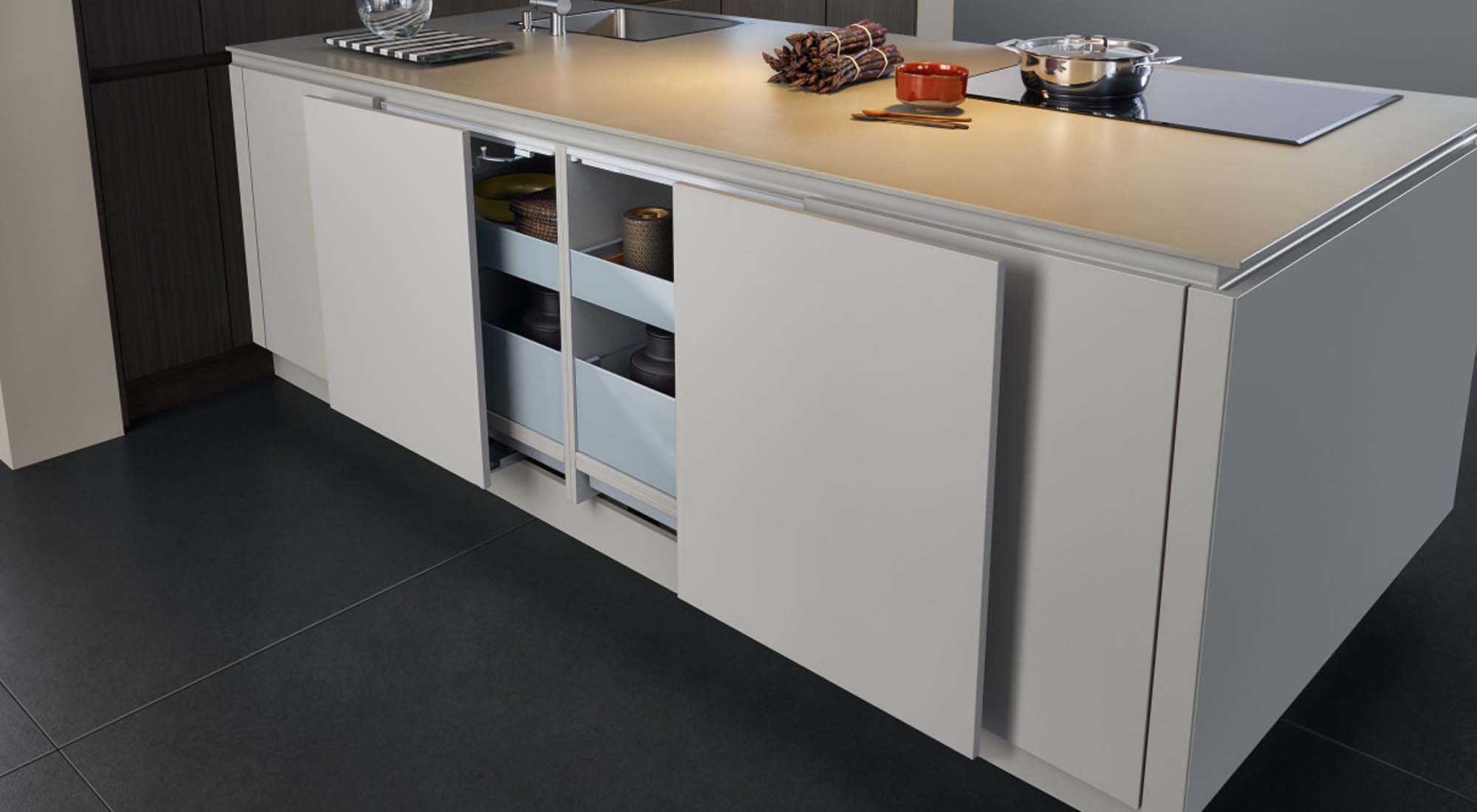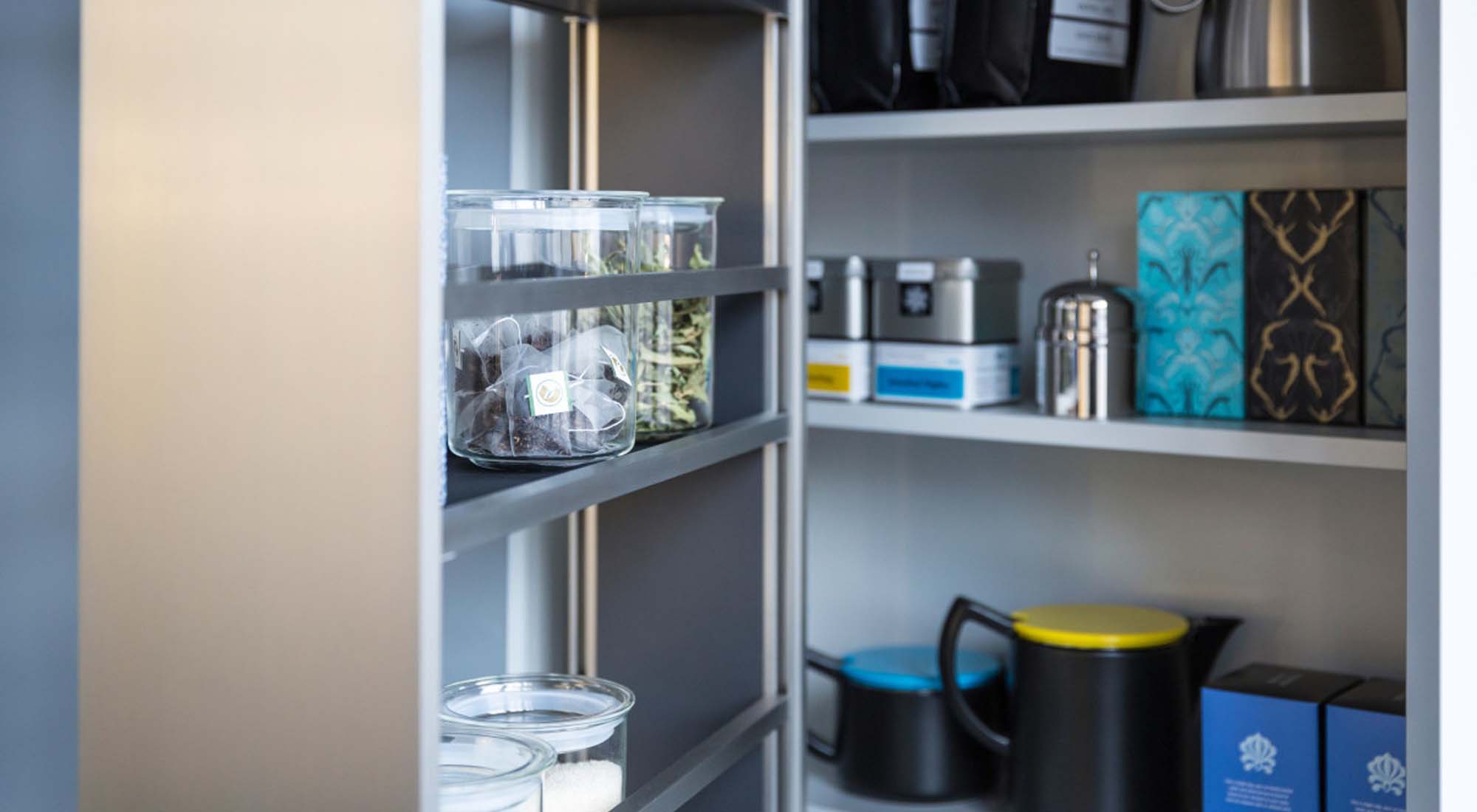This is the perfect opportunity to give your kitchen a thorough clear-out, de-clutter and generally have a good organise and re-arrange.
With the current lockdown due to the Covid-19 pandemic, many of us are at home until who knows when. To avoid boredom, we are finding anything to do around the house. This is an ideal time to de-clutter, tidy and reorganise your kitchen.
How to clear out your kitchen successfully
Make sure you have a couple of hours spare before you embark on your kitchen clear-out.
A cluttered kitchen starts with the worktop. It should be kept clear at all times. But as the days of the week whizz by with busy work and family life, the worktop can easily become the home for mail, magazines, keys and basically all life miscellanea.
Start your kitchen declutter by tidying away anything on the worktop that you don’t use, or if you never use it, throw it away or recycle.
Re-locate smaller appliances that are left on the worktop to another area for the moment – we’ll come back to these – and get rid of any non-essential worktop décor. Whatever is left should be functional and essential to cooking.
Cupboard space is key within a kitchen. Although we often start with a clear, organised cupboard when we first move in to a new house, we quickly get into bad habits. We stack and pile things inside our cupboards, to a point where they become crowded and disorganised.
To start cleaning out your cupboards, you will need to have some clear worktop space (which you should now be in abundance of), bin bags, recycling bags and some cleaning products to hand.
Only thing left to do now is take everything out.
Decluttering crockery cupboards
Like me, you might find that your inner hoarder comes out when it comes to mugs, plates and bowls. I’ve just counted, and we have 15 different, non-matching mugs in my household of 2 people. We probably have 2 favourite mugs each that we use day-to-day. We also have a ‘posh’ set for when we have guests over.
They key to decluttering your crockery cupboards is to be ruthless and only store what you need. Don’t have endless spares of any type of dish; you should only store enough crockery for what you need for a daily meal and a couple of spares for those times when you might have a guest or two.
If you have any special china or cutlery that you only use on special occasions, try to store these elsewhere, clearly labelled and stored safely.
Use your clear worktop space to sort through and group your crockery collections. Donate any that are mix-matched and discard anything that is chipped or damaged.
Clearing out food cupboards
You’ve done the shopping, hauled it home and now it’s time to put it away. You might take the time to put it away in an organised manner or it’s thrown into a cupboard, in some sort of messy order, which over time becomes chaotic and less user friendly, with smaller items getting buried and lost.
As you empty out your food cupboards, throw away any items that are out of date or past their best before date. Take this time to dust off or wipe over tins or packets to rid of any dust or germs.
As you come across forgotten foods from the back of the cupboard that are miraculously still in date, think about what family meals you can cook with the ingredients you have in your cupboard. This process will help to cut down on food waste and save money on your next food shop.
With your cupboards completely clear, now is the perfect opportunity to give the interior a wipe down with a cloth and some eco-friendly, anti-bacterial cleaner.
How to re-arrange and organise your kitchen
Fundamentally your kitchen should be realistic and practical, working hard to maximise storage and organisation so you can cook and use the space efficiently and easily. After all, you have a busy lifestyle as it is; who wants to have to work even harder when in the kitchen?
With your cupboards clean and clear, everything now needs to go back. Take a moment to consider re-arranging your kitchen around your most frequent activities. Think about what you do most often.
Be practical where you place things. For example, is your mug cupboard near the kettle for easy access when making a tea or coffee? Do you have space to create a ‘tea or coffee station’? We are finding more customers are specifically looking for a space dedicated to making hot drinks in their kitchen.
We mentioned about storing cutlery or crockery only used for special occasions elsewhere; are there any other lesser used items that can be stored more efficiently outside of the kitchen?
Make sure any heavy items are placed down low. If you’re terrified of taking down that large juicer machine from a top shelf, you’ll likely not use it.
Wall units and cupboards are valuable storage space and making them work hard helps to maintain a clean and clear worktop.
One easy task to help maximise your storage is to make the most of the any moveable shelves you have in your cupboards. Think about any wasted space above your items on a shelf; can you re-arrange the shelves to create more space for larger items? For example, I couldn’t fit my large, tall cereal boxes in any of my cupboards, so they were left on the side. I have a spices cupboard with one shelf and found that moving this shelf up just one notch, I still had adequate space for the spices, but also now made enough room below to fit my cereal boxes and store them out of sight.
When storing crockery items in a cupboard, it’s easy to pile these, which can build and take up unnecessary space. Try to find alternatives to the pile; with the exception of pretty bowls and white plates most things don’t look great or store well when in piles or stacks.
Consider any storage space that can be utilised on the wall. Anything that can be lined up or spread out, for example a magnetic knife strip or storing your pot lids standing up in a drawer.
Think about storing vertically too, such as vertical dividers in a cupboard for baking trays and similar items. Typically, you might stack these in a drawer, but when stored vertically, your selection is easier to see and access.
How to store food
When arranging your food back into cupboards, consider organising these in categories or type. For example, all your tins and non-perishables, baking goods; flours, icing sugar etc, pasta and rice and breakfast items.
Arrange your food in a way so you can easily see what you have in your cupboards. Smaller items have a habit of making their way to the of the back of cupboard, where they are forgotten about, meaning you are likely to buy unnecessary duplicates in your next shop.
Think about using storage baskets for pasta and rice, for example, so you can avoid any messy spillages in your cupboard.
Any storage solutions need to be sensible and practical, so remember they may not necessarily be the prettiest.
Having a well organised food cupboard makes it easier to see at a glance what you do have and you can select and prepare food more efficiently.
For more inspiration to achieve a tidy, clutter-free kitchen, take a look at our portfolio.
Speak To Our Experienced Designers…
Whether you’re unsure where to start with your project or want advice regarding which one of our bespoke German kitchens would suit your living space best, our designers and fitters are on hand to meet all your requirements. If you would like to speak to one of the members of our team before your visit, please get in touch by clicking the button on the right.



